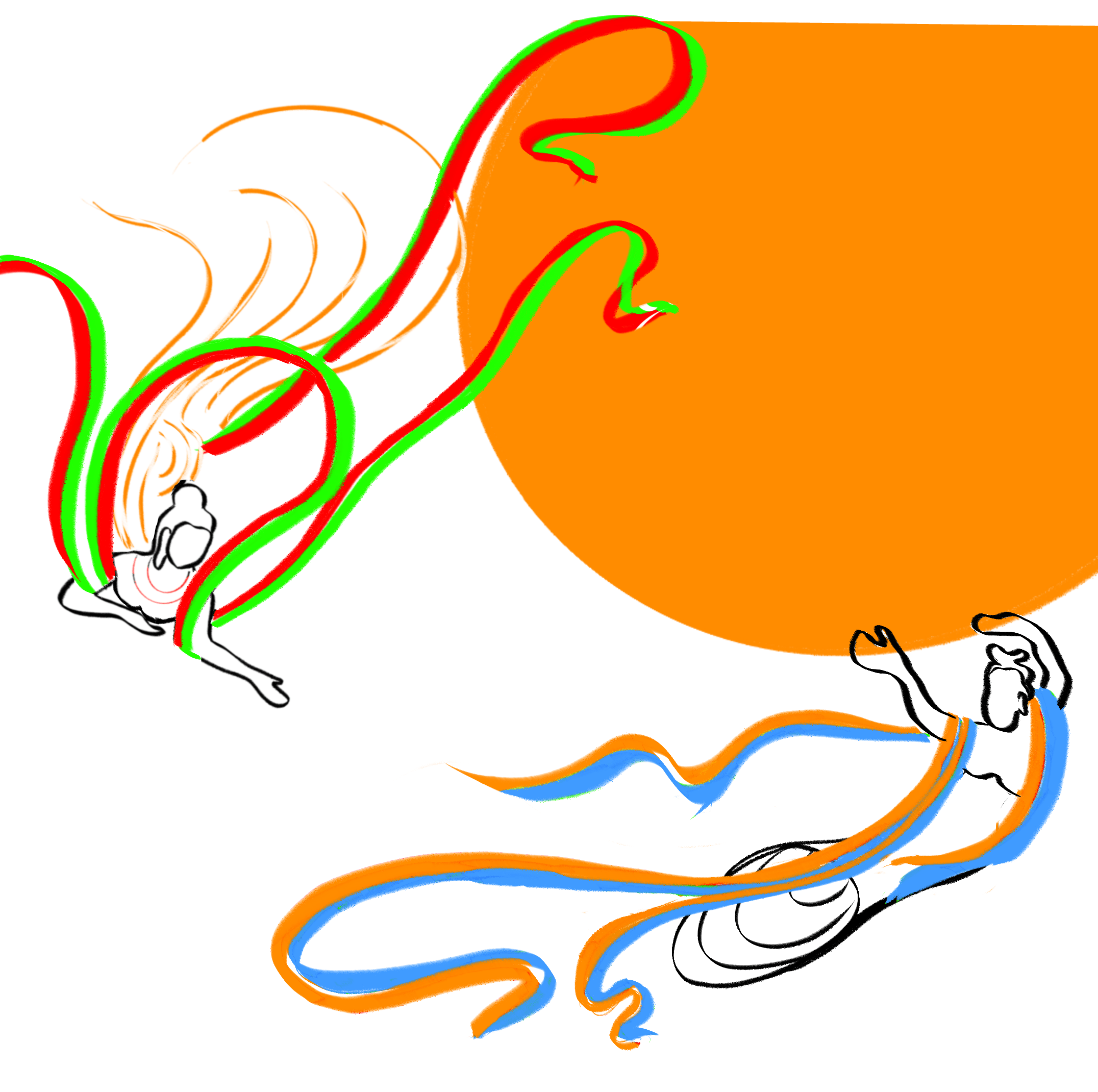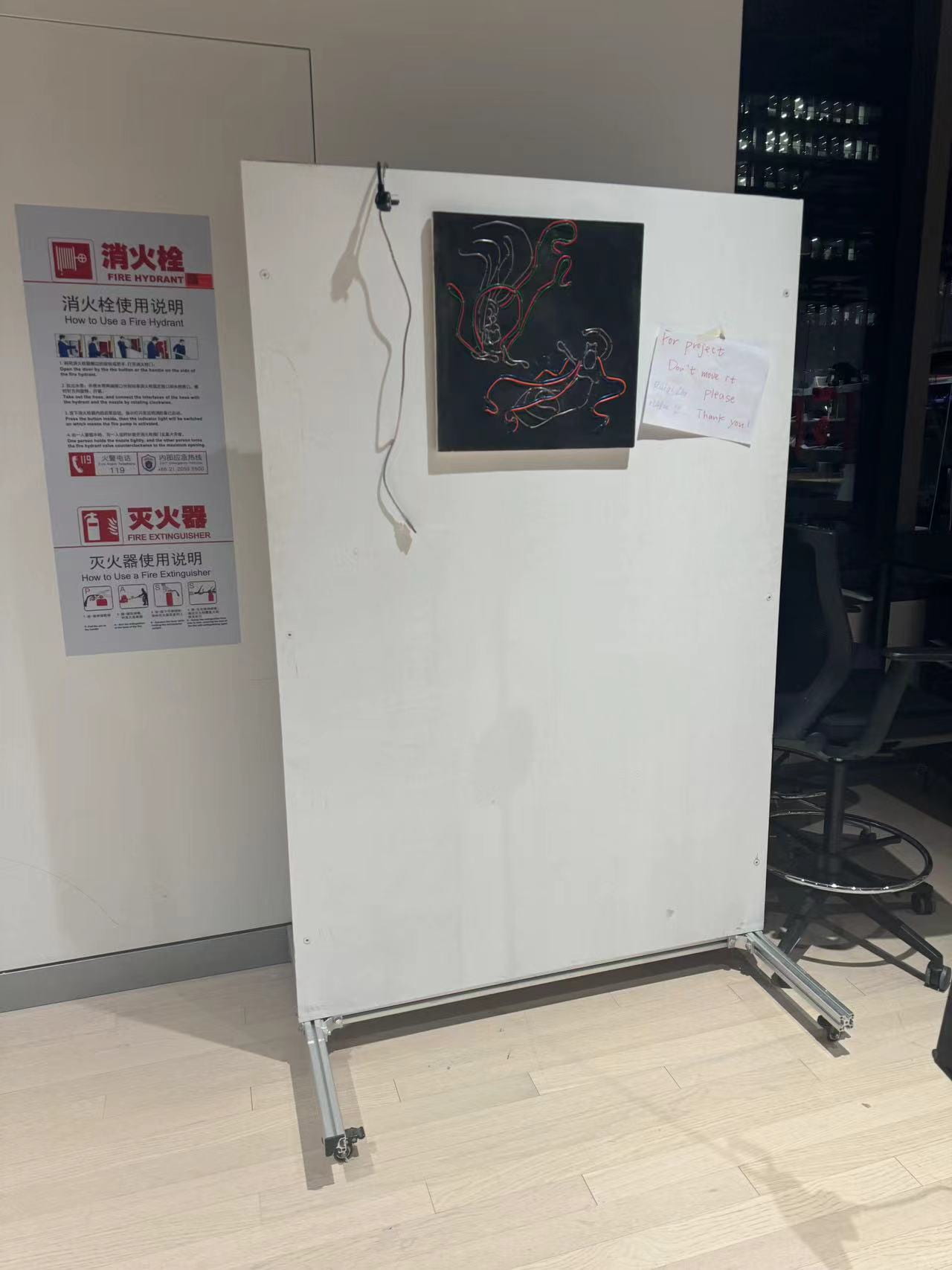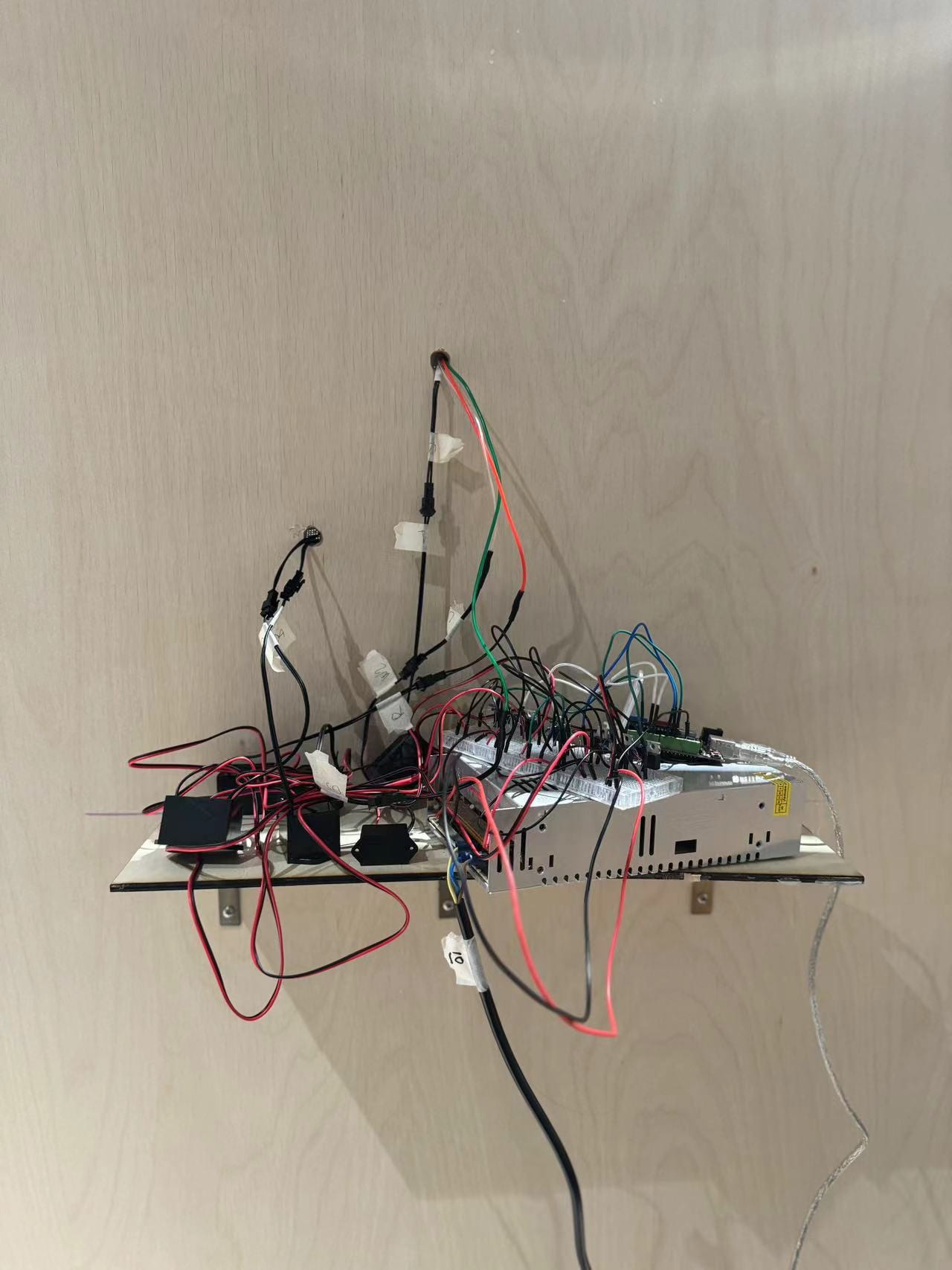Project Description
This project is a picture of Chinese Apsaras embroidered on canvas with El wires. With programming to make it light up/fade, it creates a short light performance when connecting with power.
Light wires are often associated with hardcore and emerging techonology. However, I was thinking of the possibilities of combining of light and traditions and softness. One day I saw the yarns in N4 studio, which reminds me of art made with silk thread and yarns, which can be similar to El wires, so I wanted to make traditional Chinese embroidery with it.
Perspective & Context
In the art work by Helen Pashgian, the light is working as a source that only shown its artistic feature via different media(the sphere). “Light, if rendered into art, must first be transmitted and transformed through materials — not projected directly at the viewer.”

Light itself need to be intergrated to other materials to be rendered into art. In this project, I am intergrating art to “yarn” and “cloth canvas”. I experimented with bold material combination — the technological light wires and soft canvas, using traditional method stitching.
Besides, Op Art plays an important role in lumia art, enabling artists to create optical illusion visual art. In this project, I used multiple wires, making them in slightly different postion and light up chronologically to create a sense of motion. (Like the silk on the arm is moving because of wind)
Development & Technical Implementation
At first, I wanted to sticth a complex shape with the wire. But then I found that El wires are not as flexible as common threads to make it bend too much. Then I have to switch to a simpler pattern with simple color like red/green/blue/orange…etc (Since I could only find El wires with these color). And then I dicided to make apsaras by chance. For the canvas, I bought multiple kinds of cloth to try with. The cloth with small holes cannot be stitched though, but the cloth with bigger holes cannot keep the wires in place. Then I switched to the canvas especially made for yarn stitching and it went well. And also I found that black background looks much better than a white, so I painted the cloth into black.
I drew the shape first on Ipad for reference:

To create a more complex visual effect, I tried to make the light fade in and out. However, the El wire is not designed to do that, which make the fading effect lagging and glitching. Although I wanted to make a traditional, quite light performance, Eric and I were quite satisfied with the actual broken light effect, so I programmed it to be more dynamic and “Cyber Punk” style.
After stitching, with so many wires, breadboard, and the huge 12v power supply, it was hard to keep the whole project neat and clean. Eric told me to hang the canvas on the wall and hide all the wires behind the wall. We drilled holes and pulled down half of the wall to make the wire get through it. In this way, the wires got organized well and clean. (Thanks to Eric!)


Presentation
The presentation went pretty well in class, I clearly introduced my basic creation process.
I thought the audience would be interested in how I stiched the wires onto the canvas, and the combination between stitching and wires. But during the presentation, the audience seems more interested in the light effect(moving sleeves) but not the fabrication.
The project would have a better visual effect under the completely dark environment (which I tried one day before the presentation in RemakerSpace (Thanks to Marcela!!). The classroom was a bit too bright for the dim El wires.
Conclusion
During the making process, I kept on thinking: stitching is so attracting because it can create so complex shape with the super-flexible threads. But El wires are appearantly too hard comparing to threads. Then what are the difference between sticking it on the acrylic board and stitching it onto the canvas?
The more I think, I feel more self-doubt to this project. But Eric told me not to give up and just keep going, and it turns out to be pretty nice.
I learnt that exploring the combination between materials can be already an innovative challenge. Light, as a source can be intergrated to multiple different medias to create unexpectable visual effects.
Besides, I would save more time to think of how and where I wanted to display this project rather than spending too much time just making it. (like placing it in a darker place like where Freddie placed his project).

